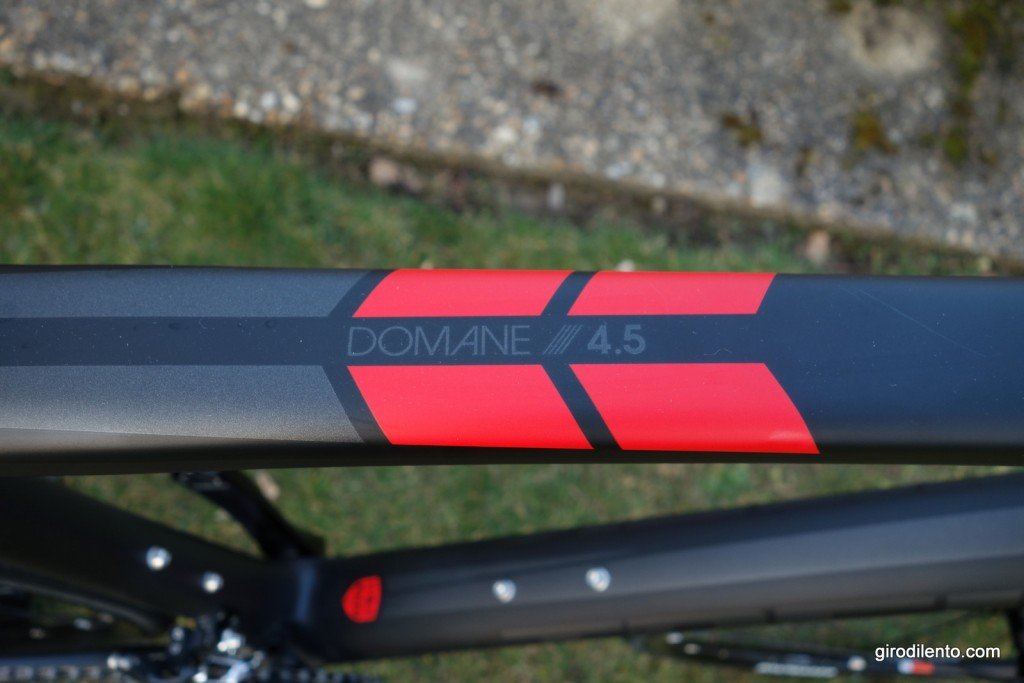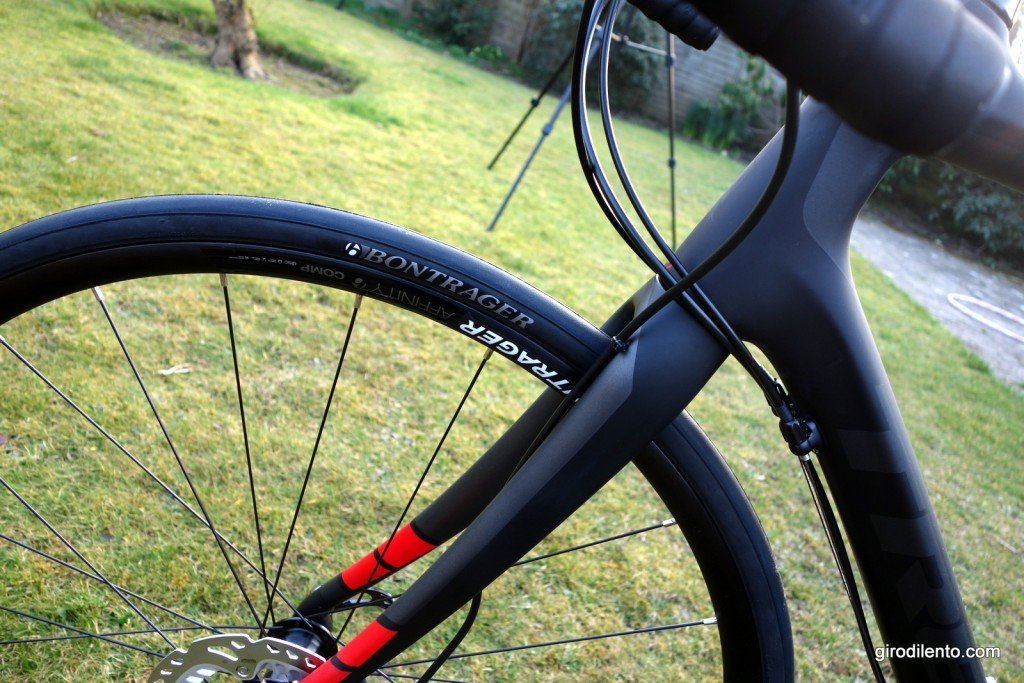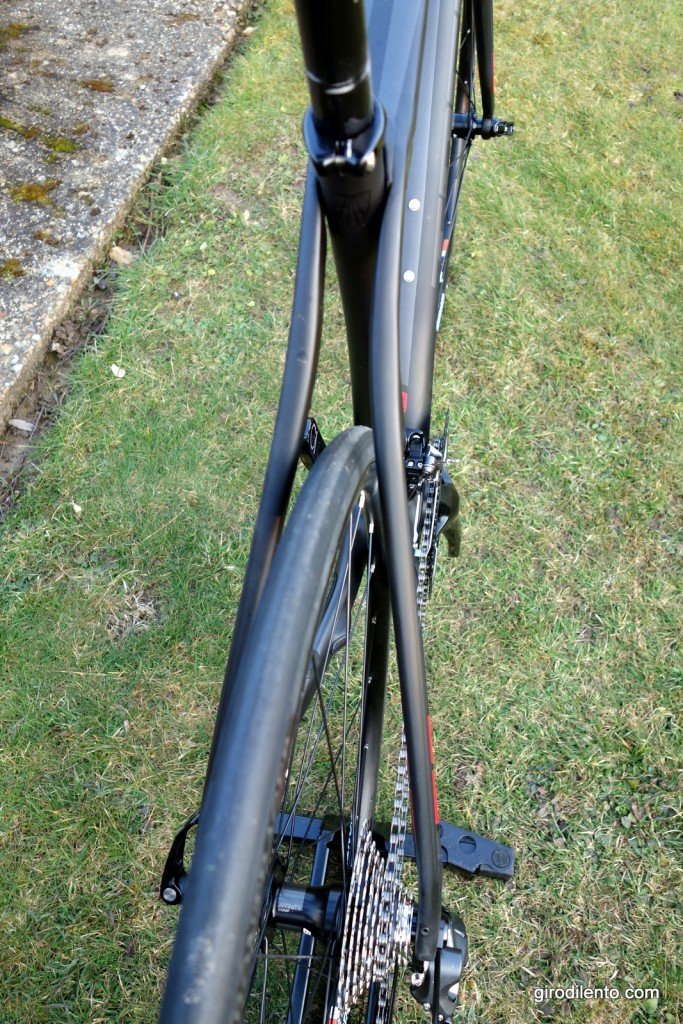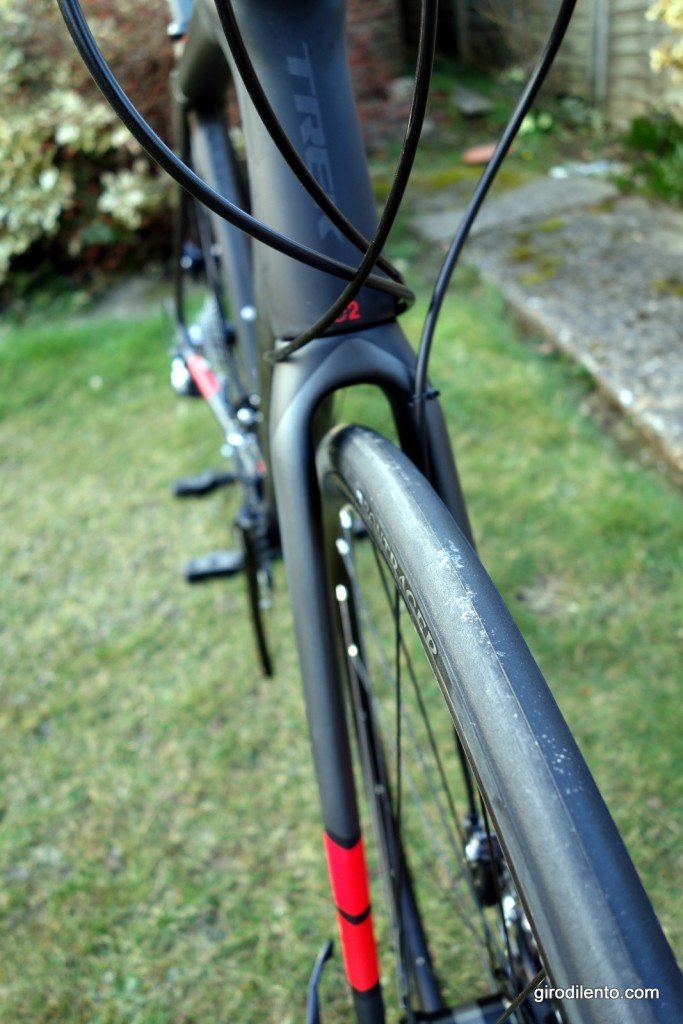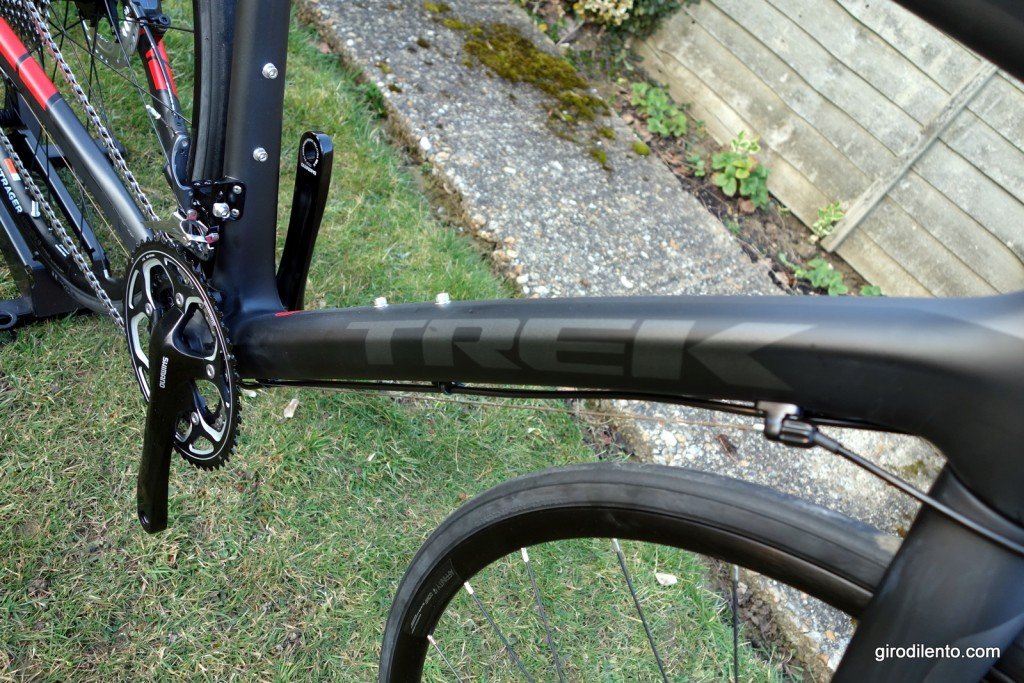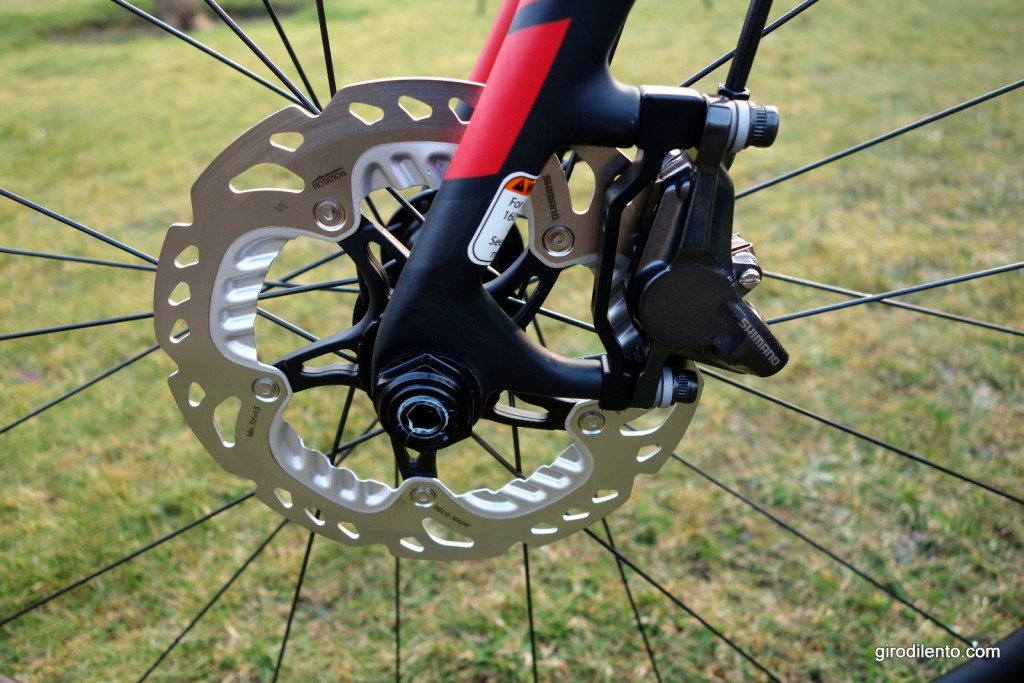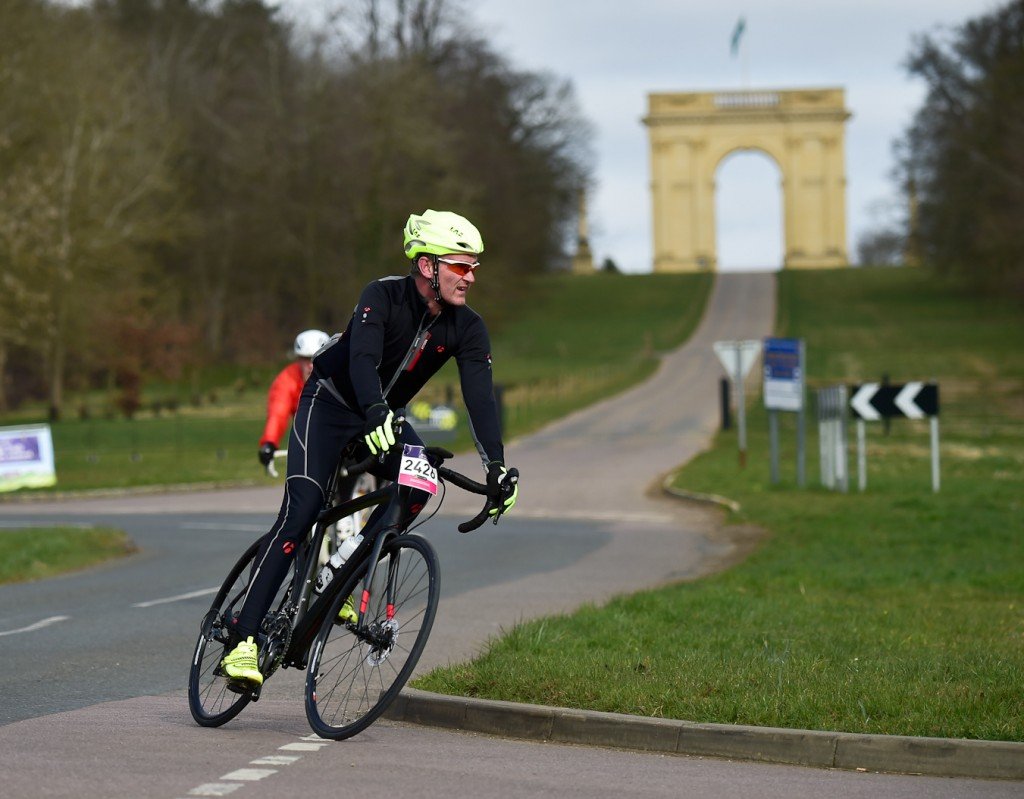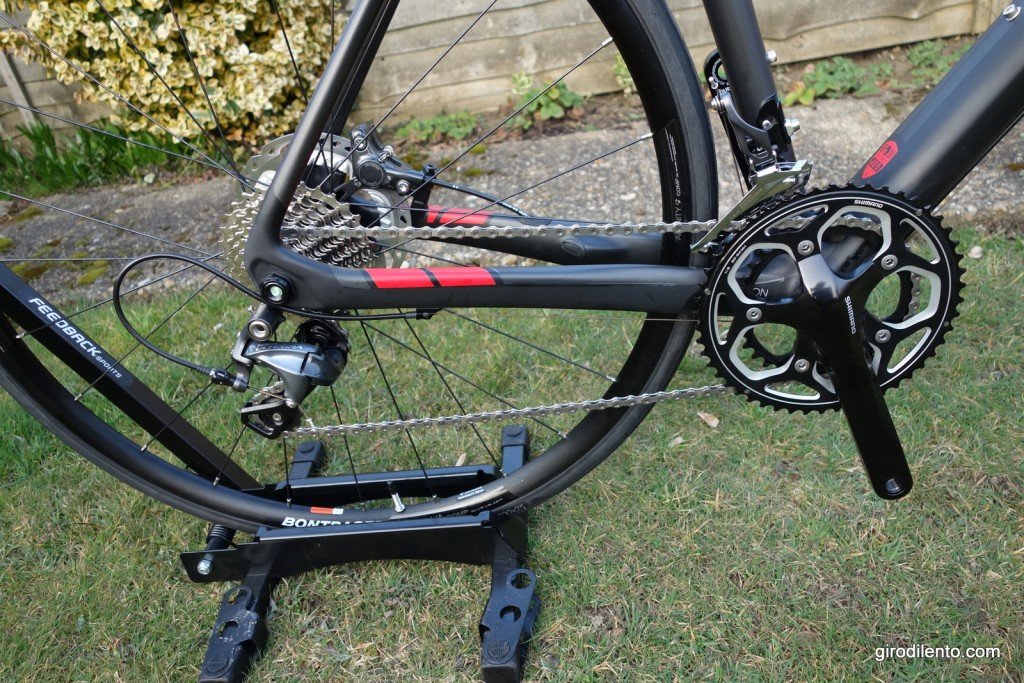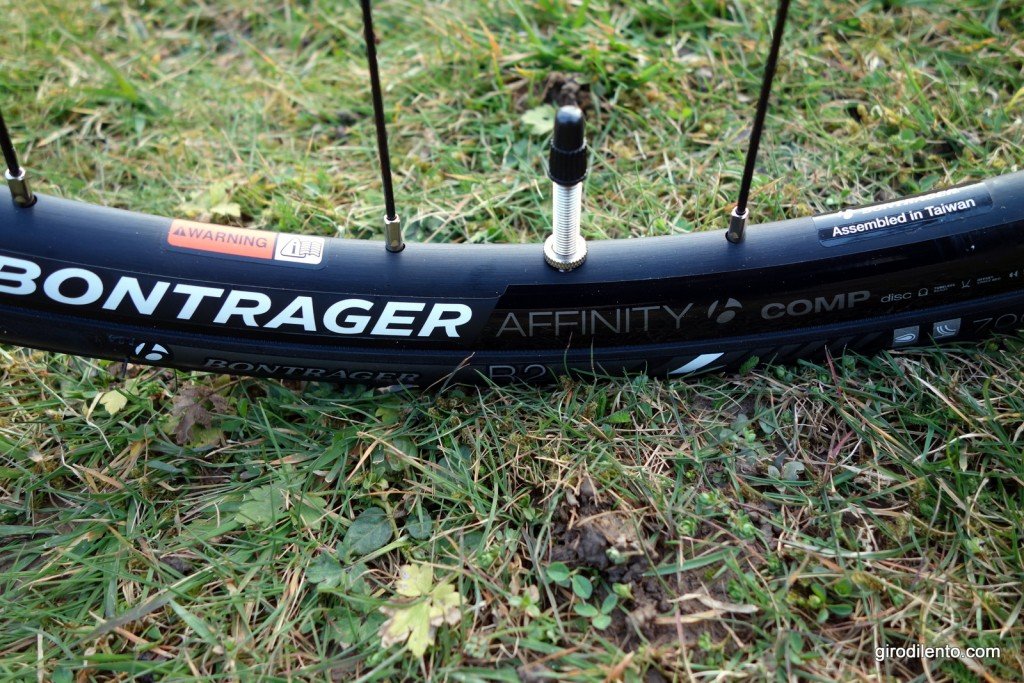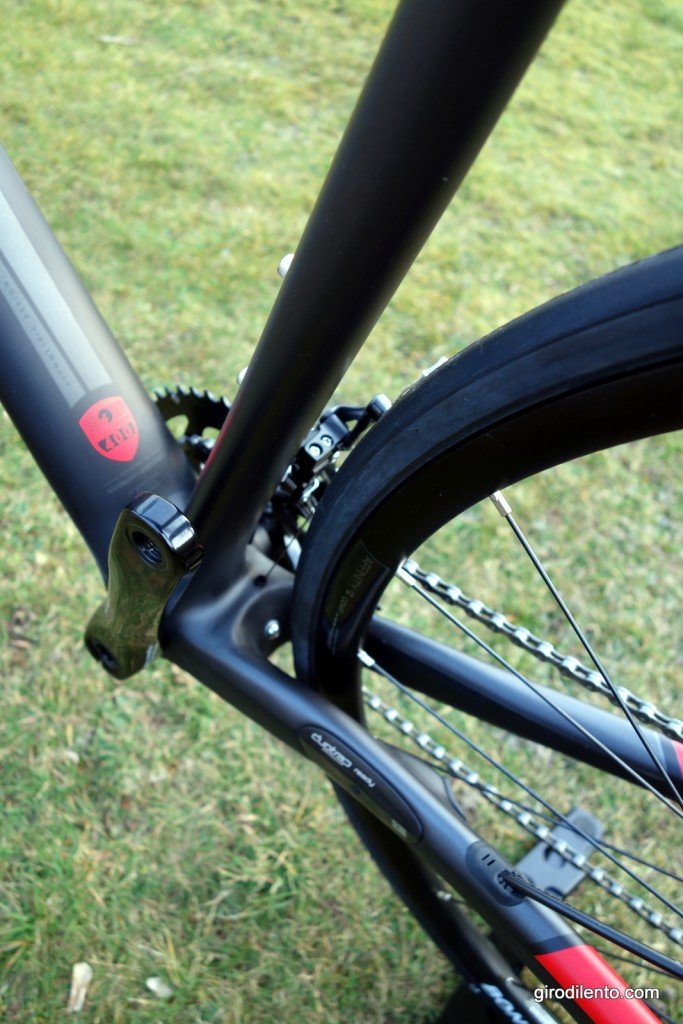Update: April 2016, Trek have announced the new Domane SLR, you can see what’s new and different here: http://girodilento.com/treks-new-domane-slr-key-points/
Trek have been kind enough to send me a Domane Disc to review and it’s a bike I’ve been looking forward to riding. It’s the first time I’ve tried the Domane with it’s now well known IsoSpeed Decoupler, designed to soften the ride over rough surfaces whilst still ensuring sufficient stiffness and responsiveness in all riding conditions. The 4.5 Domane Disc I’m riding also has what I expect to be a fantastic spec in the form of Shimano’s excellent R685 hydraulic disc brakes, combined with Shimano’s well proven Ultegra 6800 mechs front and rear.
The Domane Disc I’ve been sent to try also features through axles front and rear for greater stiffness, with in this case a 142x12mm rear axle and a 15mm front. By combining the post mount disc brakes with the through axles the result offers, according to Trek, maximum stiffness, steering precision and rigidity – something my 68kg weight and skinny legs will find difficult to prove to be frank. It’ll be interesting to ride them none the less, as they might well make a difference that I can notice in cornering and descending.
The IsoSpeed fork is another interesting aspect of the Domane design with a curve and shape designed to increase compliance and smooth the ride quality, with a dropout design and positioning to “optimise wheelbase”. Given the smoothness effect the IsoSpeed Decoupler offers in the seat tube, the fork has a challenge of providing an equivalent enough smoothness through the front of the bike so that the ride feels balanced between front and rear.
The Domane features Trek Endurance geometry but this is not a sit up and beg sportive bike, it’s still designed to be fast enough to race. Fabian Cancellara loves his and seems to do pretty well on them. In the 56cm size I’m riding the stack height is only 7mm higher than the Kinesis TK3/4S that I used to own, or 1.4cm higher than Trek’s H2 geometry. The stack height is just over an inch higher (27mm) than on my “race” bike. The point I’m trying to make is that it’s not a super high front end and it’s designed for endurance racing/riding over rough surfaces whilst looking after you and your back. Yes, it’s higher than an out and out smooth surface race bike but it’s quite a bit lower than a Specialized Roubaix (which is 15mm higher again in a 56cm) and for most of us, higher is most likely better than lower for comfort over long rides. One of the upsides of a higher front end is you don’t need any spacers and I’ve already rearranged the stack on the bike I have to test.
The 4 Series Domane is made from Trek’s 400 series OCLV carbon. In simple terms this is towards the entry end of Trek’s carbon range and the next step up for disc bikes would be the Domane Disc 6.2 which costs £1,700 more as a result of the more expensive 600 Series OCLV carbon and a few other spec upgrades. The more expensive OCLV variants offer lighter, stiffer and more compliant frames according to the information on Treks own site but perhaps lose the bang for buck of this 400 series bike.
For those of you interested in weight, this bike (size 56cm) straight of the box weighed 8.95kgs on my ebay scales of semi-truth and 9.35kgs with my pedals, a bottle cage and Garmin mount. It’s not light, there’s no hiding from that and there are a number of other Domane options including the 5.2 at around the same price that weigh quite a bit less ( circa 1.5kgs).
However, even for a lightweight like me, weight isn’t everything, it’s getting out on the road and riding it that’s key. Working out how the bike feels through the seat of your pants.
In the flesh, I really like the look of the bike. The matt carbon with red highlights works really well and personally I’ve already been won over to the look of disc bikes. Some of my riding companions have been less effusive (I’m being diplomatic) about the look, particularly of the rotors and disc brakes – especially at the front of the bike. Me, I like it, but I know that’s also influenced by the time I’ve already spent riding the Shimano disc brakes and I think they perform fantastically.
The specification of the bike is solid, with good dependable kit and components from the bars and stem down to the tyres (25mm by the way, although there’s loads of clearance for 28mm or perhaps even wider). You can tell this is a bike designed and specced to last well, from the through axles to the choices of most components. Strength, toughness and durability are, to me, writ large on the spec sheet. It’s a bike that in just looking at, you know that you’ll break well before it will. It’s a bike that looks like it’s ready smash some cobbles or what we call road surfaces in the UK in this age of Austerity (some local roads make Flanders cobbles look good).
Initial riding impressions:
I’ve put in a couple of rides on the Domane 4.5 Disc so far, totalling in around 150km. So these observations are first impressions only and I’ll write more once I’ve got more time in the saddle.
This is definitely a smooth bike, you still feel the big hits when you ride over rough surfaces and potholes (and I’ve aimed for quite a few so far), but the impact is definitely dulled and more by the rear than the front. That being said the fork still does an impressive job of smoothing rough surfaces.
There’s no question either about the IsoSpeed Decoupler, it works, you can feel the seatpost move a little as you ride across rough ground and it definitely makes for a more comfortable ride. The movement is just enough to not make it feel like it’s too much or that your position is shifting too far. Obviously when you get out the saddle, the bike feels very stiff as you’d expect as you remove the impact of the IsoSpeed Decoupler.
The disc brakes and through axles give a real feeling of solidity and strength through the platform and seem to work well together.
Ultegra mechanical works as well as you’d expect and is easy to adjust, should you need to. The brakes are fantastic unsurprisingly but I’ve had some pinging from one of the rotors coming out of bends, so I think I’m going to need to tweak the front disc brake position a touch.
The bars are comfortable as is the Bontrager Bar tape, the saddle perhaps a touch overpadded for me, has been absolutely fine to ride so far.
The wheels, whilst not super light roll wheel and are shrugging off me riding them over most of the roughest ground I can find. The tyres too, whilst far from the top of the range that Bontrager make ride nicely and grip well.
The only negative thing I can find to say so far is that at 9.3kgs all in, for me, the bike doesn’t feel especially spritely or snappy as the relatively heavy build dulls the performance a touch. That being said I did manage a gold time on a sportive on the first ride but I found the extra weight over some of my lighter bikes felt like it made it a little harder to ride fast. Heavier bikes of course bring more training benefit and as I said, weight’s not everything.
Early impression are that the Trek Domane 4.5 Disc is a smooth, comfortable and strong bike, that’ll shrug off whatever poor road surfaces you encounter. However, it’s carrying a little extra weight compared to some of the rest of the Domane family and this has an impact on liveliness and the general feeling of the bike on the road.
I’m off to get more mileage in and will write more once I have.
Any questions, please let me know and thanks for reading.
You can find out more about the Domane Disc 4.5 here: http://www.trekbikes.com/uk/en/bikes/road/endurance_race/domane/domane_4_5_disc_compact/
If you’ve found this post useful, please consider subscribing to girodilento premium today to help us produce more great content. Subscribers also get access to our pro cycling coverage, premium interviews and the ability to give suggestions for future posts.
You can subscribe now by clicking on the green button below:
[mepr-membership-registration-form id=”20566″]

